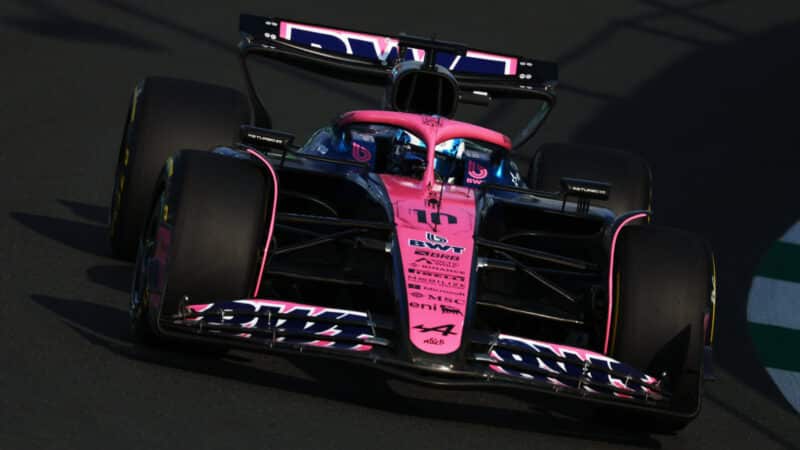2025 Saudi Arabian GP FP1 results - Gasly quickest from Norris
Formula 1's 2025 Saudi Arabian Grand Prix weekend kicked off with Pierre Gasly on top of the times in first practice at Jeddah

Pierre Gasly, Alpine, during Saudi Arabian GP practice
Getty Images
Pierre Gasly was the surprise pace-setter in first practice for the 2025 Saudi Arabian Grand Prix as the fifth round of the season kicked off at Jeddah.
The Alpine driver, who scored the team’s first points of the year in Bahrain last weakened, posted a best time of 1m29.239s to lead the afternoon’s running ahead of Lando Norris‘s McLaren.
Gasly set his quickest time on Pirelli’s medium tyres, finishing 0.007s ahead of the championship leader.
Ferrari‘s Charles Leclerc was third quickest, also less than a tenth of a second off Gasly’s time, with Bahrain GP winner Oscar Piastri fourth in the second McLaren.
Alexander Albon completed the top five in the Williams. All five drivers used medium tyres for their fastest laps.
World champion Max Verstappen finished down in ninth after complaining about the balance of his Red Bull on the radio.
The session, which took place with a track temperature of 45 degrees Celsius, was mostly trouble-free.
Racing Bulls Liam Lawson is facing an investigation for failing to follow the race director’s notes, the Kiwi “entering the painted area between the pit entry and the track”, according to the official document from the stewards.
2025 Saudi Arabian GP first practice results
| Pos | Driver | Team | Time | Gap | Laps |
| 1 | Pierre Gasly | Alpine | 1:29.239 | 24 | |
| 2 | Lando Norris | McLaren | 1:29.246 | +0.007s | 25 |
| 3 | Charles Leclerc | Ferrari | 1:29.309 | +0.070s | 27 |
| 4 | Oscar Piastri | McLaren | 1:29.341 | +0.102s | 24 |
| 5 | Alex Albon | Williams | 1:29.606 | +0.367s | 23 |
| 6 | George Russell | Mercedes | 1:29.618 | +0.379s | 21 |
| 7 | Carlos Sainz | Williams | 1:29.779 | +0.540s | 25 |
| 8 | Lewis Hamilton | Ferrari | 1:29.815 | +0.576s | 26 |
| 9 | Max Verstappen | Red Bull | 1:29.818 | +0.579s | 26 |
| 10 | Yuki Tsunoda | Racing Bulls | 1:29.821 | +0.582s | 25 |
| 11 | Liam Lawson | Racing Bulls | 1:29.907 | +0.668s | 18 |
| 12 | Nico Hülkenberg | Sauber | 1:29.916 | +0.677s | 24 |
| 13 | Kimi Antonelli | Mercedes | 1:29.934 | +0.695s | 24 |
| 14 | Fernando Alonso | Aston Martin | 1:29.976 | +0.737s | 24 |
| 15 | Isack Hadjar | Racing Bulls | 1:30.011 | +0.772s | 15 |
| 16 | Jack Doohan | Alpine | 1:30.183 | +0.944s | 25 |
| 17 | Lance Stroll | Aston Martin | 1:30.583 | +1.344s | 22 |
| 18 | Oliver Bearman | Haas | 1:30.595 | +1.356s | 21 |
| 19 | Esteban Ocon | Haas | 1:31.029 | +1.790s | 20 |
| 20 | Gabriel Bortoleto | Sauber | 1:31.038 | +1.799s | 23 |
